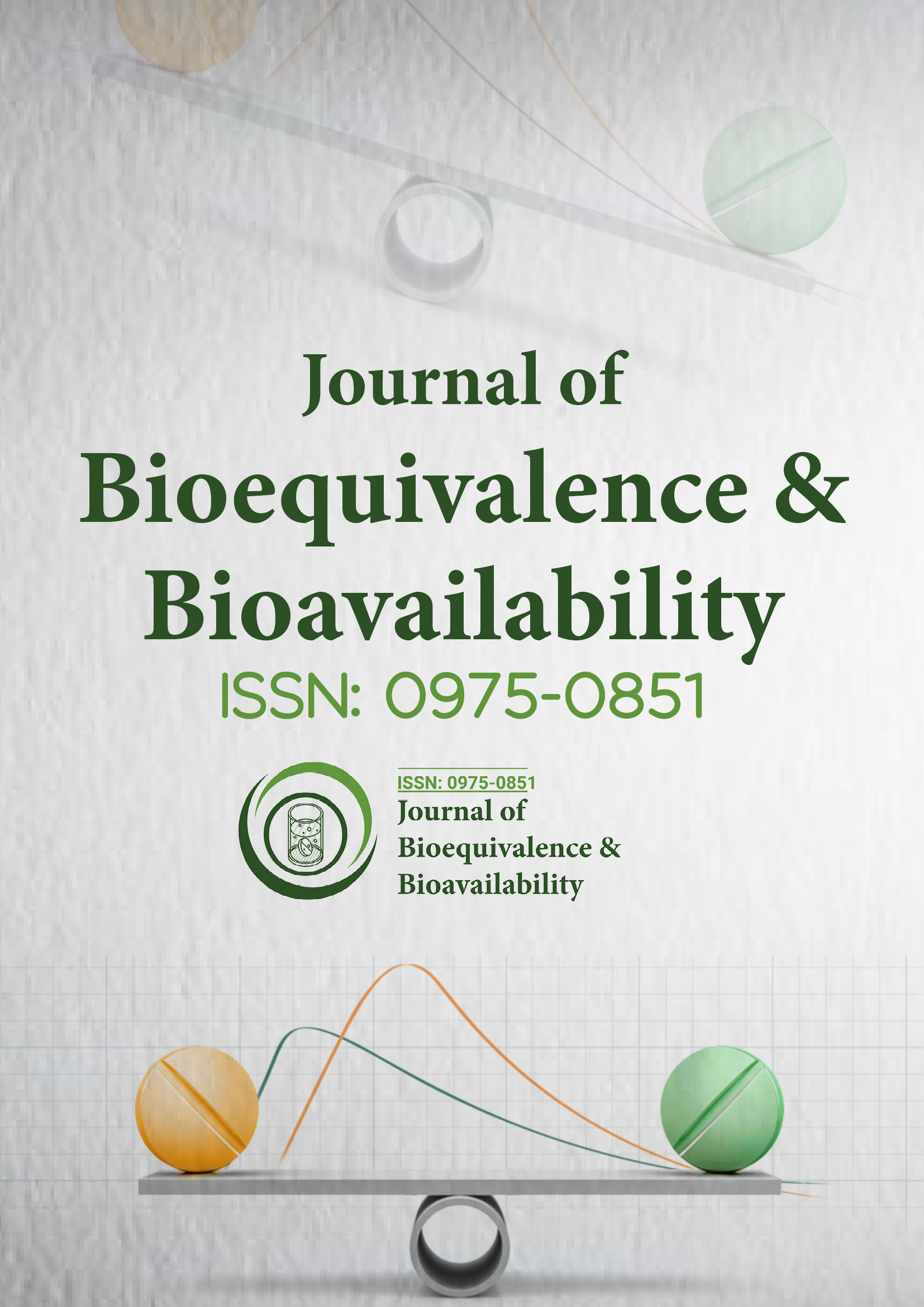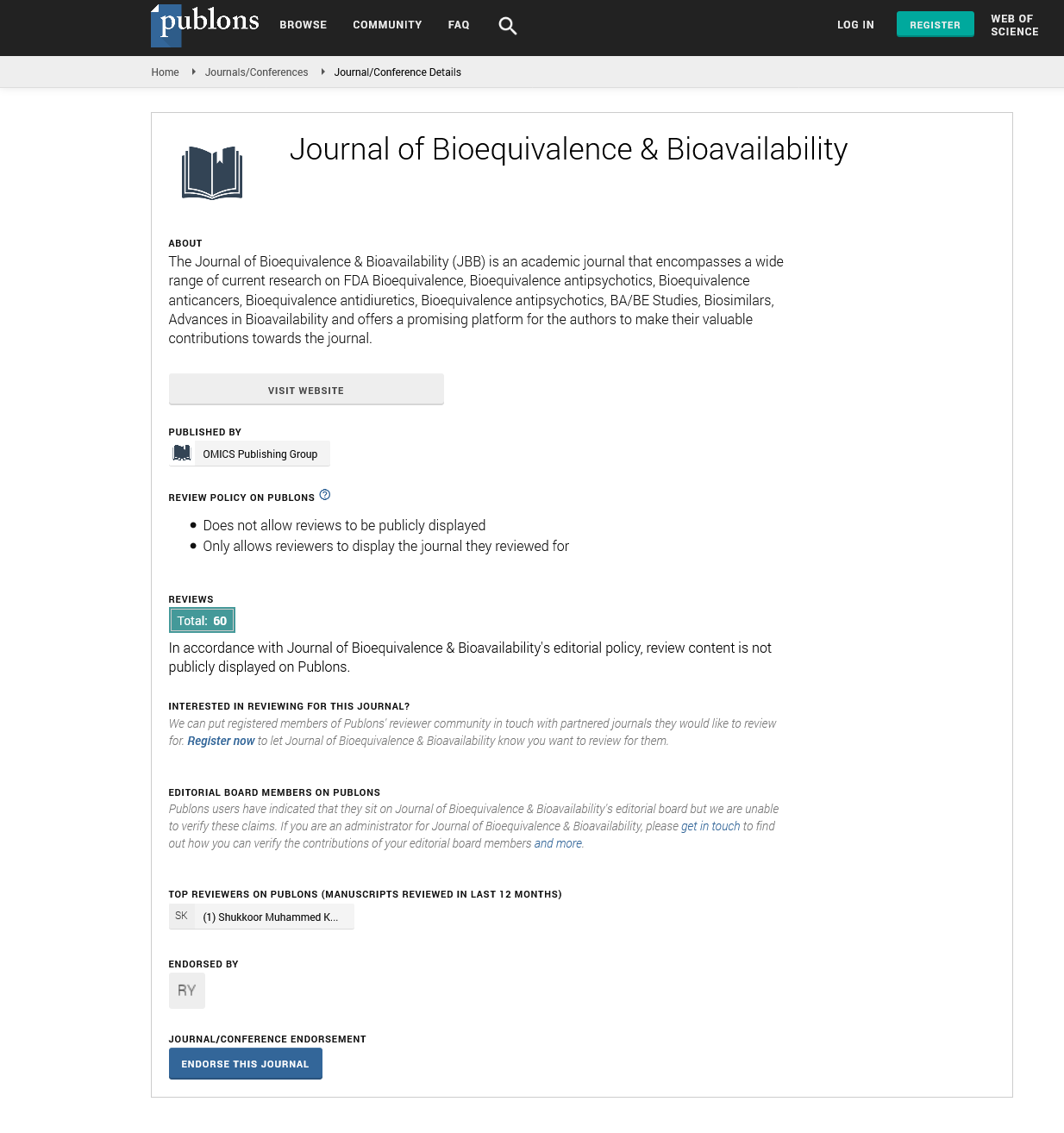Indexed In
- Academic Journals Database
- Open J Gate
- Genamics JournalSeek
- Academic Keys
- JournalTOCs
- China National Knowledge Infrastructure (CNKI)
- CiteFactor
- Scimago
- Ulrich's Periodicals Directory
- Electronic Journals Library
- RefSeek
- Hamdard University
- EBSCO A-Z
- OCLC- WorldCat
- SWB online catalog
- Virtual Library of Biology (vifabio)
- Publons
- MIAR
- University Grants Commission
- Geneva Foundation for Medical Education and Research
- Euro Pub
- Google Scholar
Useful Links
Share This Page
Journal Flyer

Open Access Journals
- Agri and Aquaculture
- Biochemistry
- Bioinformatics & Systems Biology
- Business & Management
- Chemistry
- Clinical Sciences
- Engineering
- Food & Nutrition
- General Science
- Genetics & Molecular Biology
- Immunology & Microbiology
- Medical Sciences
- Neuroscience & Psychology
- Nursing & Health Care
- Pharmaceutical Sciences
Perspective - (2025) Volume 17, Issue 3
The Role of Generic Drugs in Modern Healthcare
Maciej Winiarski*Received: 28-May-2025, Manuscript No. JBB-25-30137; Editor assigned: 30-May-2025, Pre QC No. JBB-25-30137 (PQ); Reviewed: 13-Jun-2025, QC No. JBB-25-30137; Revised: 20-Jun-2025, Manuscript No. JBB-25-30137 (R); Published: 29-Jun-2025, DOI: 10.35248/0975-0851.25.17.637
Abstract
Description
Generic drugs play a vital role in modern healthcare by providing safe, effective, and affordable alternatives to brand-name medications. They help reduce healthcare costs while maintaining the same therapeutic benefits as their branded counterparts. The development, approval, and monitoring of generic drugs are governed by strict regulatory standards to ensure that they are equivalent in quality, efficacy, and safety. Understanding the science and regulation behind generic drugs is important to promoting public confidence and ensuring effective treatment outcomes.
A generic drug contains the same Active Pharmaceutical Ingredient (API) as the brand-name product. It must deliver the same therapeutic effect, dosage form, strength, route of administration, and intended use. However, the excipients, color, or packaging may differ, as long as these variations do not affect the drug’s performance or bioavailability. The fundamental principle underlying the approval of generic drugs is bioequivalence the demonstration that the generic product performs the same as the innovator drug in the human body.
Bioequivalence studies are at the heart of generic drug development. These studies compare the rate and extent of absorption of the generic and the reference formulations by analyzing pharmacokinetic parameters such as maximum concentration (C_max), time to reach maximum concentration (T_max), and the area under the plasma concentration-time curve. When these parameters fall within an acceptable range typically 80% to 125% of the reference product the two formulations are considered bioequivalent. This ensures that patients can expect the same therapeutic effect and safety profile when switching between brand and generic versions.
The process of developing a generic drug begins once the patent or exclusivity period of the innovator drug expires. Manufacturers must submit an Abbreviated New Drug Application (ANDA) to regulatory agencies such as the U.S. Food and Drug Administration (FDA) or the European Medicines Agency (EMA). The ANDA pathway allows generic manufacturers to rely on the existing safety and efficacy data of the original drug, focusing mainly on demonstrating bioequivalence and quality. This significantly reduces development time and costs, making generics more affordable and accessible.
Quality assurance is a critical aspect of generic drug manufacturing. Generics must meet the same stringent requirements for identity, strength, purity, and stability as brand-name drugs. Manufacturing facilities are subject to regular inspections and must comply with Good Manufacturing Practices (GMP). Analytical methods such as High-Performance Liquid Chromatography (HPLC), mass spectrometry, and dissolution testing are routinely used to confirm consistency and quality. Regulatory authorities also require post-marketing surveillance to monitor any adverse effects and ensure long-term safety.
Despite their proven equivalence, misconceptions about generic drugs persist among some patients and healthcare professionals. Concerns often arise regarding differences in excipients, appearance, or brand reputation. However, scientific evidence consistently shows that generic drugs are as safe and effective as their branded counterparts. Regulatory agencies conduct rigorous evaluations to ensure that these differences do not alter drug absorption or therapeutic outcomes. Education and awareness programs are important for improving public confidence and encouraging the use of generics.
The economic impact of generic drugs is profound. By offering lower-cost alternatives, generics enhance access to essential medicines, particularly in low- and middle-income countries. They also help reduce the overall burden on healthcare systems by lowering treatment costs for chronic conditions such as hypertension, diabetes, and cancer. Competition from generic manufacturers encourages innovation and drives brand-name companies to develop new drugs and improved formulations.
In conclusion, generic drugs are a cornerstone of accessible and sustainable healthcare. They ensure continuity of treatment for millions of patients worldwide without compromising quality or efficacy. Through rigorous bioequivalence testing, strict manufacturing standards, and ongoing regulatory oversight, generic medicines uphold the same therapeutic standards as branded drugs. Promoting trust in generics and strengthening regulatory frameworks will continue to enhance public health, reduce treatment costs, and ensure equitable access to essential medicines for all.
Citation: Winiarski M (2025). The Role of Generic Drugs in Modern Healthcare. J Bioequiv Availab. 17:637.
Copyright: © 2025 Winiarski M. This is an open-access article distributed under the terms of the Creative Commons Attribution License, which permits unrestricted use, distribution, and reproduction in any medium, provided the original author and source are credited.

